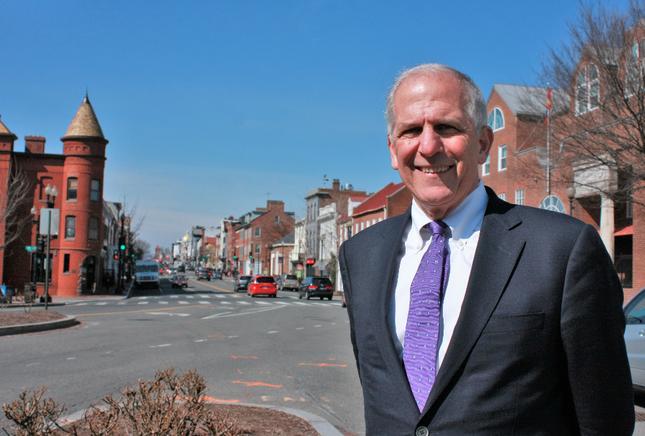’50 Great American Places’: Motivating Moments, Neatly Packaged
By • May 5, 2016 0 1228

“Historical literacy,” according to public historian and R Street resident Brent D. Glass, “is more than simply knowing the names of leaders or when famous battles were fought. It involves understanding the context of historical events and how events are connected.”
Having devoted his career to the cause of historical literacy, the director emeritus of the Smithsonian’s National Museum of American History decided to take action in a direct and personal way: He wrote a book.
Published this spring, Glass’s “50 Great American Places: Essential Historic Sites Across the U.S.” doesn’t read like a lecture from your American history teacher, unless you had an unusually inspiring one. In an inviting, conversational style, Glass captures some of the atmosphere of the places his entries describe.
Better yet, many of his Great American Places are well-chosen surprises.
Yes, Great American Place No. 1 is the National Mall, here in D.C. But No. 50 is “Malls of America.” Glass uses the plural because that entry covers the history of the enclosed shopping mall, from the 1956 debut of modernist architect Victor Gruen’s Southdale Center in Edina, Minnesota, to the gargantuan Mall of America, which opened in 1992 in nearby Bloomington.
Along the way, the reader gets a capsule history of suburbanization, with a cross-reference to the phenomenon’s 19th-century roots, nurtured in books like “The American Woman’s Home,” written in 1869 by Catharine Beecher and her sister Harriet Beecher Stowe (Stowe’s Hartford, Connecticut, home, along with that of her neighbor, Mark Twain, is Great American Place No. 25).
By grouping sites both geographically and thematically, Glass has written an enjoyable volume for the hammock (or the bathroom) as well as a guidebook. You may want to get one copy for the car and one to keep handy at home.
The entries between the Mall and the Malls are roughly chronological. Glass checks in at the Liberty Bell (No. 9), the Alamo (No. 18) and Pearl Harbor (No. 41, get it?), but also touches down at key spots in the history of American art, science and social change.
Famed biographer David McCullough, who met Glass — then head of the Pennsylvania Historical and Museum Commission — in 1989 at the centennial of the Johnstown Flood, calls attention in the book’s forward to the choice of a farmhouse in Red Cloud, Nebraska, as Great American Place No. 26 (“Willa Cather’s Great Prairie”):
“[Pioneer woman] Annie Pavelka and her story were the inspiration for Willa Cather’s famous masterpiece ?My Ántonia,’ and to stand there beside the storm cellar into which she rushed her children when tornadoes struck is to feel the ?power of place’ in no uncertain terms.”
As much as anyone, McCullough has shown that history doesn’t have to go down like medicine. Well-written narratives can motivate us both to want to learn more and to experience in person the places that shaped our nation. Glass’s book contains many such motivating moments, neatly packaged for 21st-century lives.

